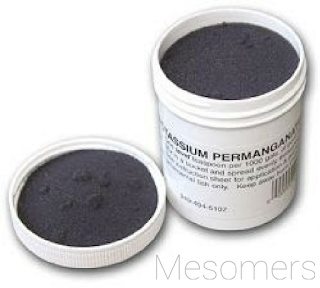 |
Potassium Permanganate |
Indicator is a substance which changes the color in response to a chemical reaction(specially in titrations). It is added to derive the exact end point for volumentric as well as complexometric titration.
There are three types of indicators which is discussed below:-
- Self Indicator:- Basically these are not an indicator it is one of the reacting species of titration(titrant or titrand), which is after completion of reaction changes the color of the solution itself. The best example is Potassium Permanganate(KMnO4) which is a self indicator. After completion of titration the color of solution becomes transparent but when one more drop Potassium Permanganate is added it changes the color of solution to light pink indicating end point of titration.
- Internal Indicator:- These are those indicators which takes part in the reaction(titration) and after completion of titration it changes the color of the solution indicating the sharp end point. An example of internal indicator is Diphenyl Amine, which is used in the titration of Mohr,s salt and Potassium Permanganate. Some more examples are Methyl Orange, Methyl Red, Phenolphthalein etc
- External Indicators:- Indicator which never takes part in the original chemical reaction but after completion of reaction it also changes the color of solution to indicate the endpoint. External indicators is not recommended as it leads to loss of some volume of the reaction mixture. One of well known example of external indicator is Potassium Ferricyanide.